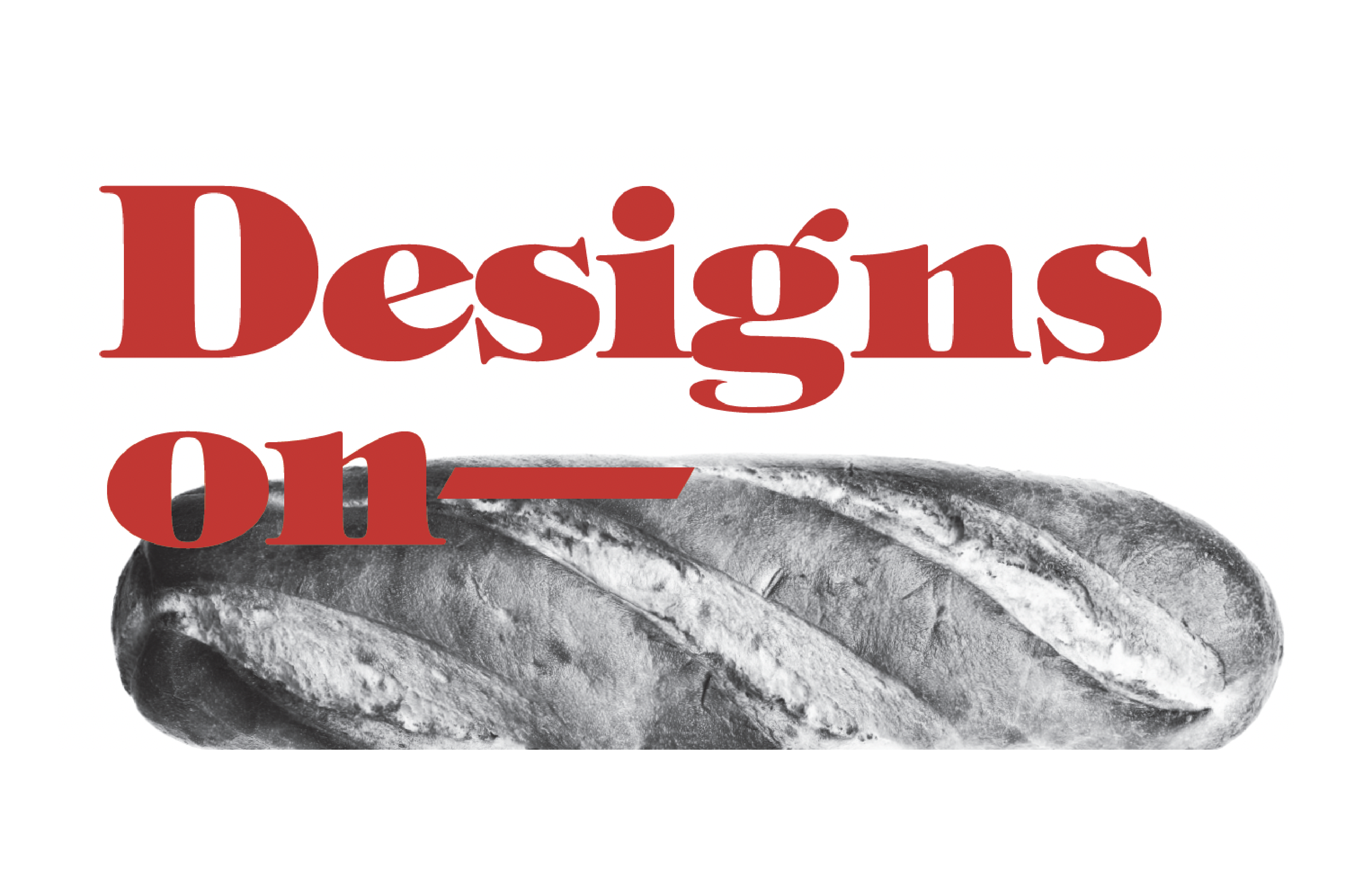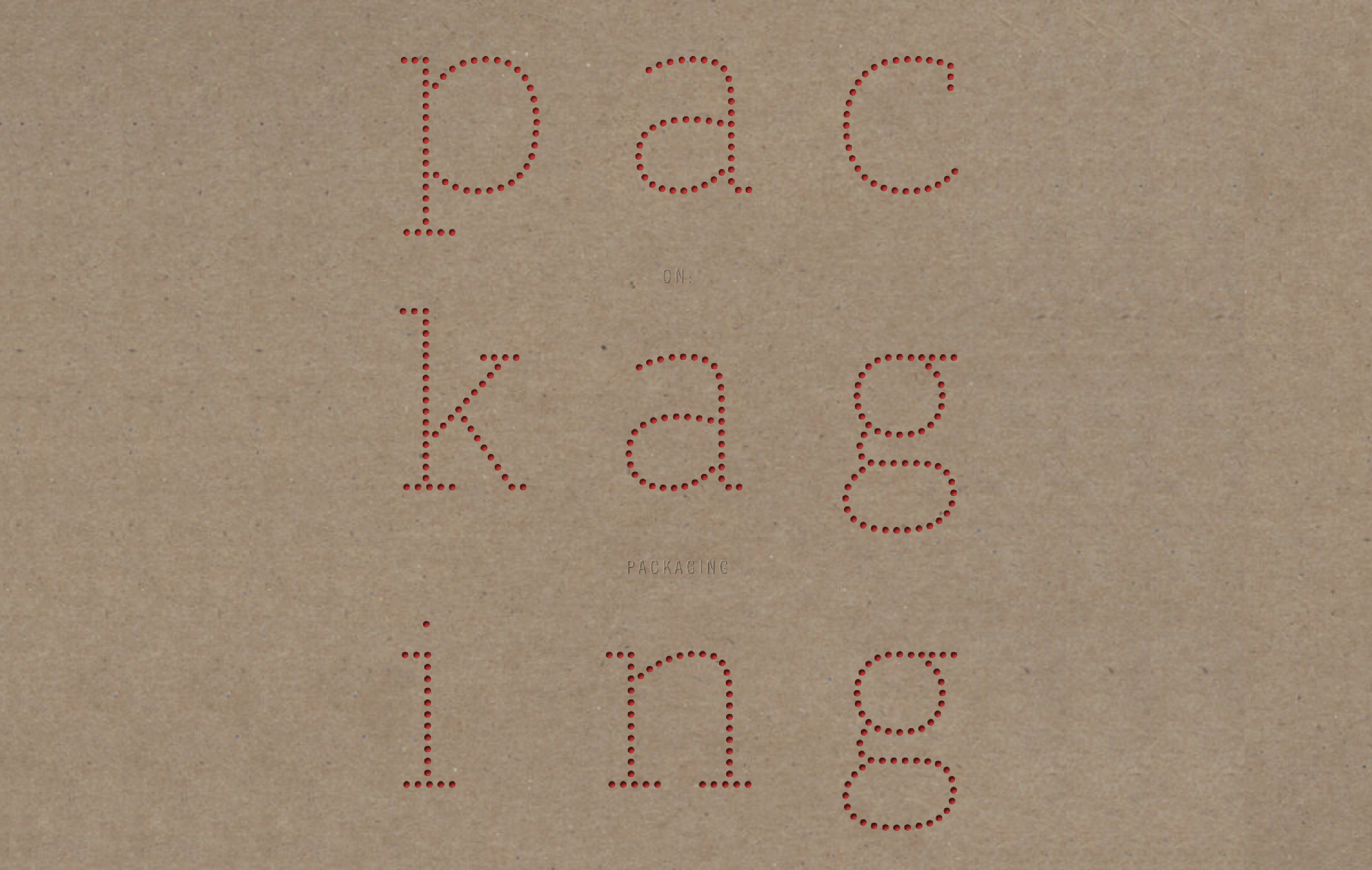We’re swimming in stats; we’re attending summits; we’re tuning into talking heads. Global warming is an undeniable concern we share the world over. But at the same time, we remain disconnected from it. Design has the unique power to transform this. Done right, it can win our imaginations, capture our hearts and inspire behavioral change for the greater good. The concepts that follow aim to do just that.
Love them, hate them.
We live in a world of duality: On/off. Good/bad. Near/far. Sooner/later. Real/unreal. But what happens when we accept the push-pull and move into the realm of possibility? The aim of this publication is not to gain audience approval or disapproval. Rather, it is about revealing the potential for change. The concepts included here are the work of a group of electrically charged designers who use their craft to usher in new narratives for existing woes and wonders, in this case, global warming. The concepts boast their own duality: They are neither here nor there, bought nor sold, in use nor out of style. Rather, they represent ideas and ingenuity, passions and persuasions, additions and alternatives in the fight against global warming. This is the first volume in a series that will explore different themes and related design explorations. As a design showcase, it is a place where fact and fiction meet, welcoming you to think big and act small. Wander around a bit. Take your time. Then turn your reaction into action.
01 Worst Fears
Global warming is the root cause of an estimated 150,000 deaths and 5 million illnesses every year. Telling the human stories related to climate change could personalize the issue, shift perceptions, and inspire positive change.
Getting Personal with Global Warming
By Jennifer Leonard
“Getting Personal with Global Warming” is a communication concept with the aim of raising awareness about global warming. It’s intended for a mass audience and is discovered serendipitously, in the context of daily life—newspapers, city guides, message boards, online, etc.
The tongue-in-cheek idea stems from a philosophical truth: the human fear of being alone outweighs the human fear of global warming. That is, our individual sense of urgency to find a partner outweighs our populist sense of urgency to “save the Earth.” So, this concept addresses the quandary we find ourselves in, with the hope that its provocative nature will spark a new perspective on human nature and our role in the world—that yes, finding partnership is essential to our well-being, but the well-being of our planet, now more than ever, determines the fate of our personal lives.
The ad is just the beginning; the dialogue that ensues is what sustains.
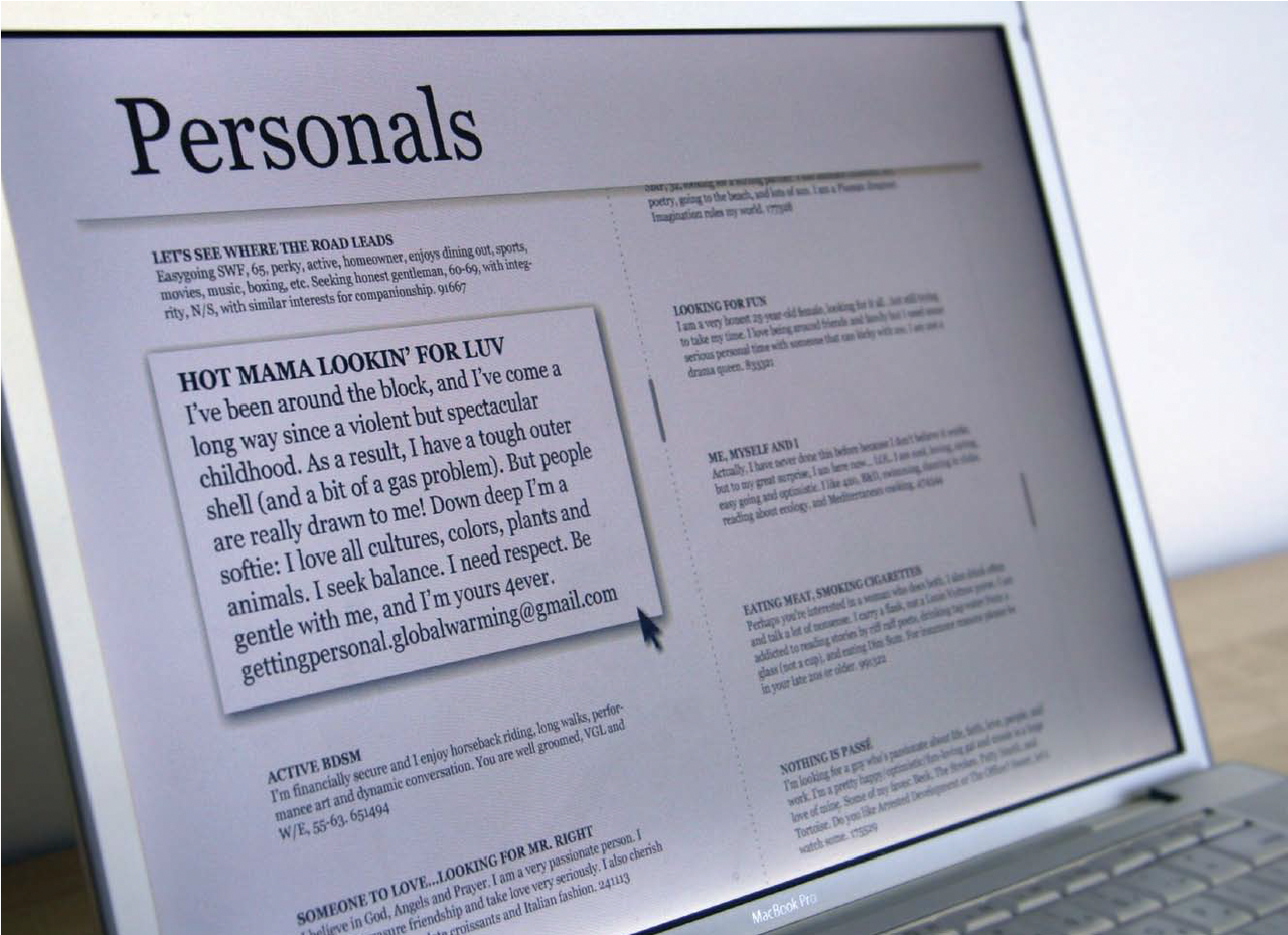
02 · Booted
If every U.S. household replaced just one regular incandescent light bulb with a compact fluorescent light bulb, it would prevent 90 billion pounds of greenhouse gas emissions from power plants—the equivalent of taking 7.5 million cars off the road. We need to find new ways of making the connection between in-home energy use and dire global consequences.
Life in Balance
By Bosung Kim
This delicate arc of light subtly communicates in-home daily electricity consumption by losing its balance when users exceed a predetermined limit. Slowly but surely, balance is lost and gained, and lost and regained yet again. Ideally, over time, user behavior changes and the light is kept in a state of balance.
This design makes use of existing technologies in order to spark dialogue between the user, the lamp, and its energy source. Life in Balance is connected to a homeowner’s wireless network and allows the user to set the electricity gauge daily, weekly, and monthly; this usage pattern is then automatically communicated to the utilities company.
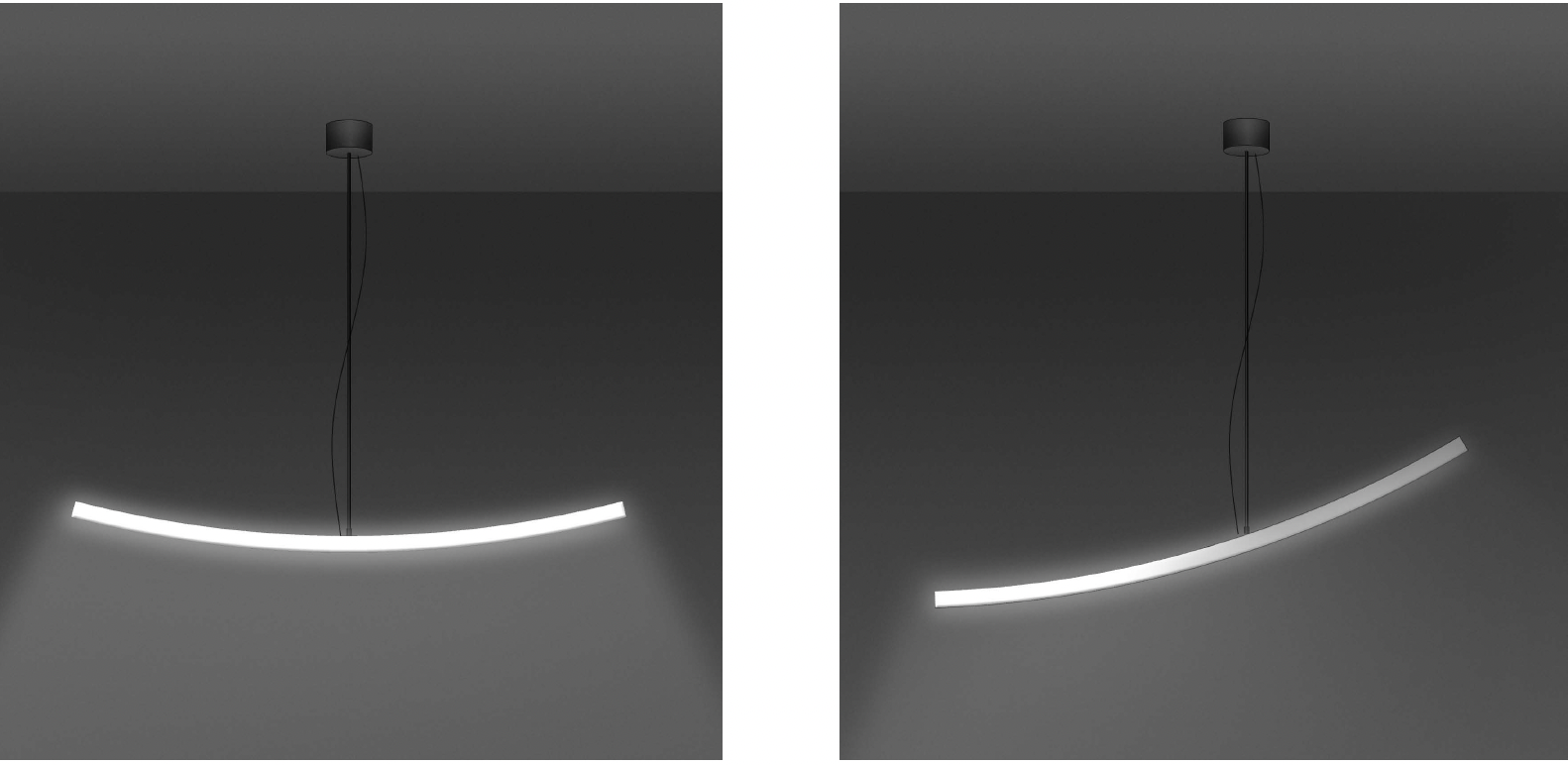
03 · Switch Off
By the year 2100, the polar ice caps will likely be completely melted, according to a United Nations panel of 2,500 scientists from 130 countries. Some scientists believe the total melting will occur even sooner.
Tank
By Martin Kay
Tank’s success lies in its subtlety. On a daily basis, the user sees incremental shifts in light levels as a marker of usage patterns. Its Rothko-like gradation of tones serves as a metaphor for the melting ice caps and rising sea levels.
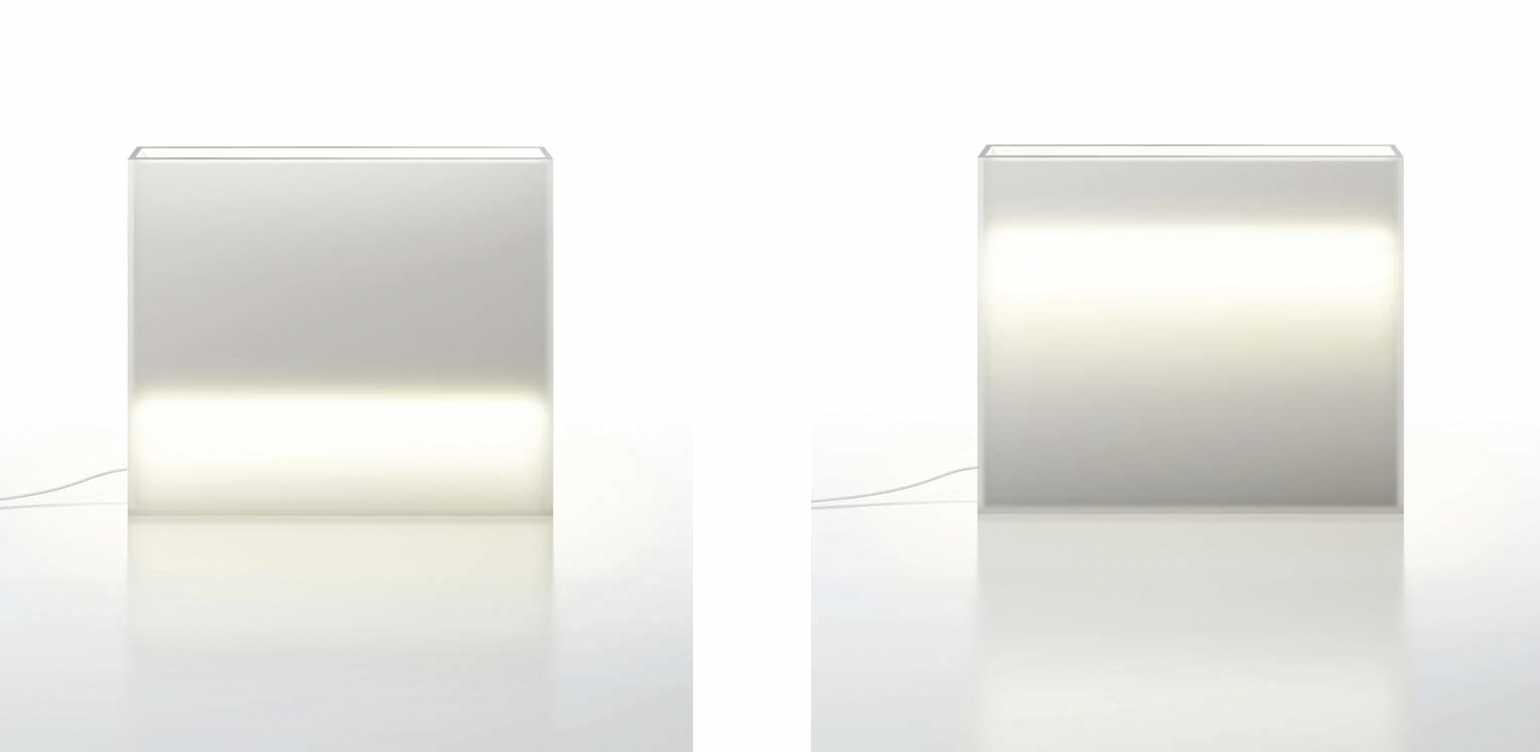
04 · Ka–Ching!
Lighting accounts for 20% of electricity bills in the average U.S. home.
Change Lamp
By Ricardo Figueiroa
Change Lamp poetically connects the user’s wallet to his or her energy usage patterns: over time, the effect is a more holistic understanding of inputs, outputs, and long-term effects. Change Lamp has no on/off switch because it is entirely coin-operated (after four consecutive coins, the lamp will turn off). The simplicity of the concept immediately and tangibly communicates choice and consequence. It’s a new way to interact with a product, which in the end, is the liaison between the user and the larger impact on the global energy grid.

05 · Up in Smoke
An eye-opening 86.5% of the world’s total power consumption is caused by the burning of fossil fuels. Imagine the difference it would make if, even for just 30 minutes a day, each person generated their own power…
Light Generator
By Blaise Bertrand
Simply put, Light Generator is a concept for a sustainable street lighting system. It is part product design, part social sculpture, and part renewable energy resource. It also happens to be a mechanism for uniting communities in the effort to conserve energy and power up together, transforming human energy into a very tangible, practical commodity.
Light Generator is composed of a network of street lamps that collect energy from proactive pedestrians, who willingly take a turn at the crank wheel mounted at the base of the pole. In this way, people can power the urban environment. The end result: reduced electricity bills and revitalized community activism.
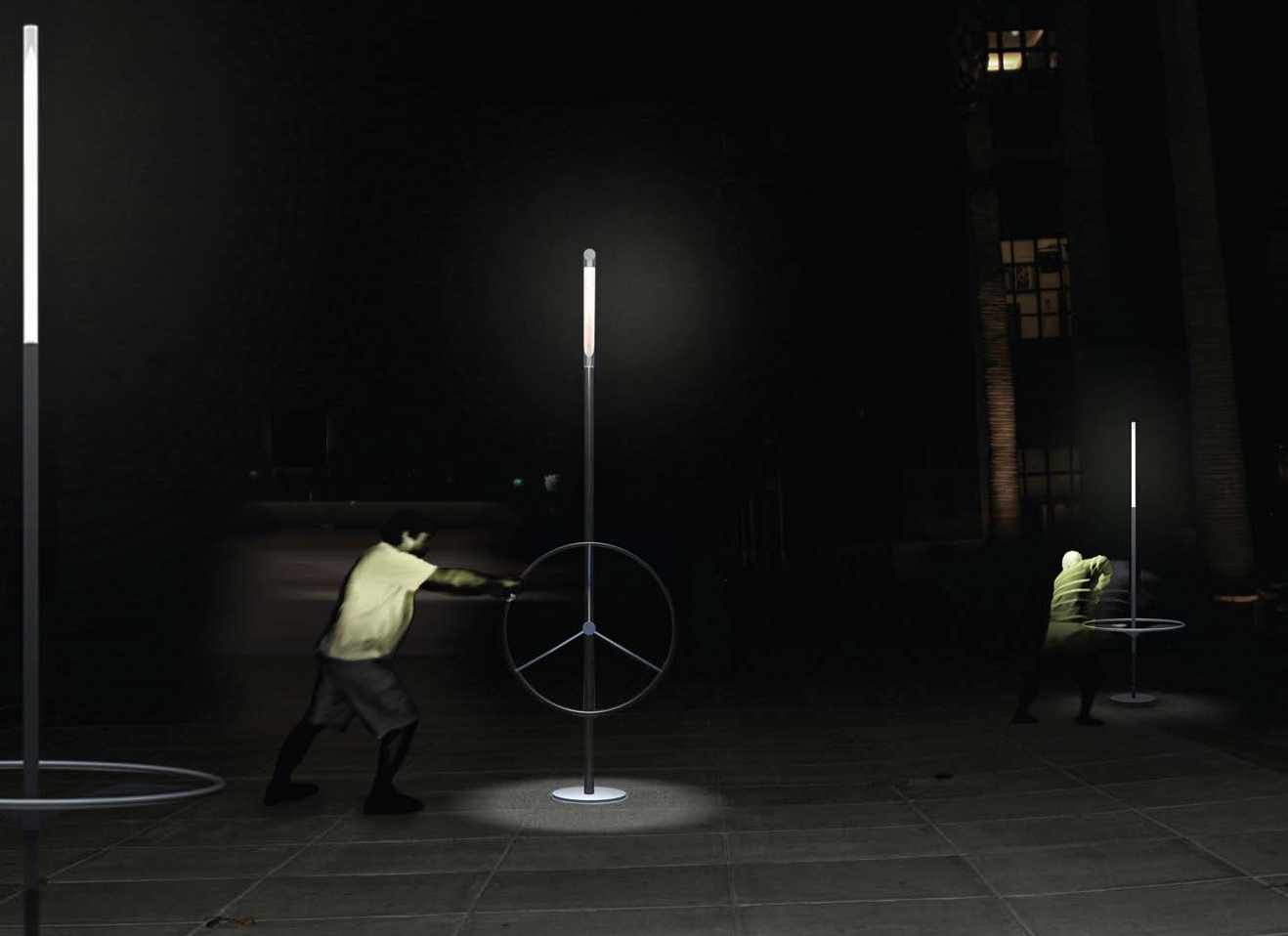
6 · Gazillions
If the thermostat in every house in America was lowered even 1°F during the winter months, the nation could save 230 million barrels of crude oil—enough to fill an oil tanker 400 times over. (Coincidentally, that’s the amount of oil being imported into the United States from Iraq each year.)
On/Off
By Adam Reineck
For too long it has been too easy to take energy for granted. No more. On/Off is a series of in-home devices that encourage homeowners to consume less.
Clockwise from left:
“Light” replaces standard switch plates with a radio frequency receiver that turns lights on and off, depending on proximity to the ring-shaped transmitter, which can be worn as an accessory and adjusted in sensitivity by turning the inner dial. Never again will leaving a room also mean leaving the lights on.
“Heat” replaces the standard thermostat. When cold, you simply lift the red flag. As the room reaches a comfortable temperature, the arm drops back to its resting position.
“Plug” is a playful device to raise awareness about electricity consumption. When the red ring is pulled, it activates in-home power for five minutes, and then retracts back into the wall plate.
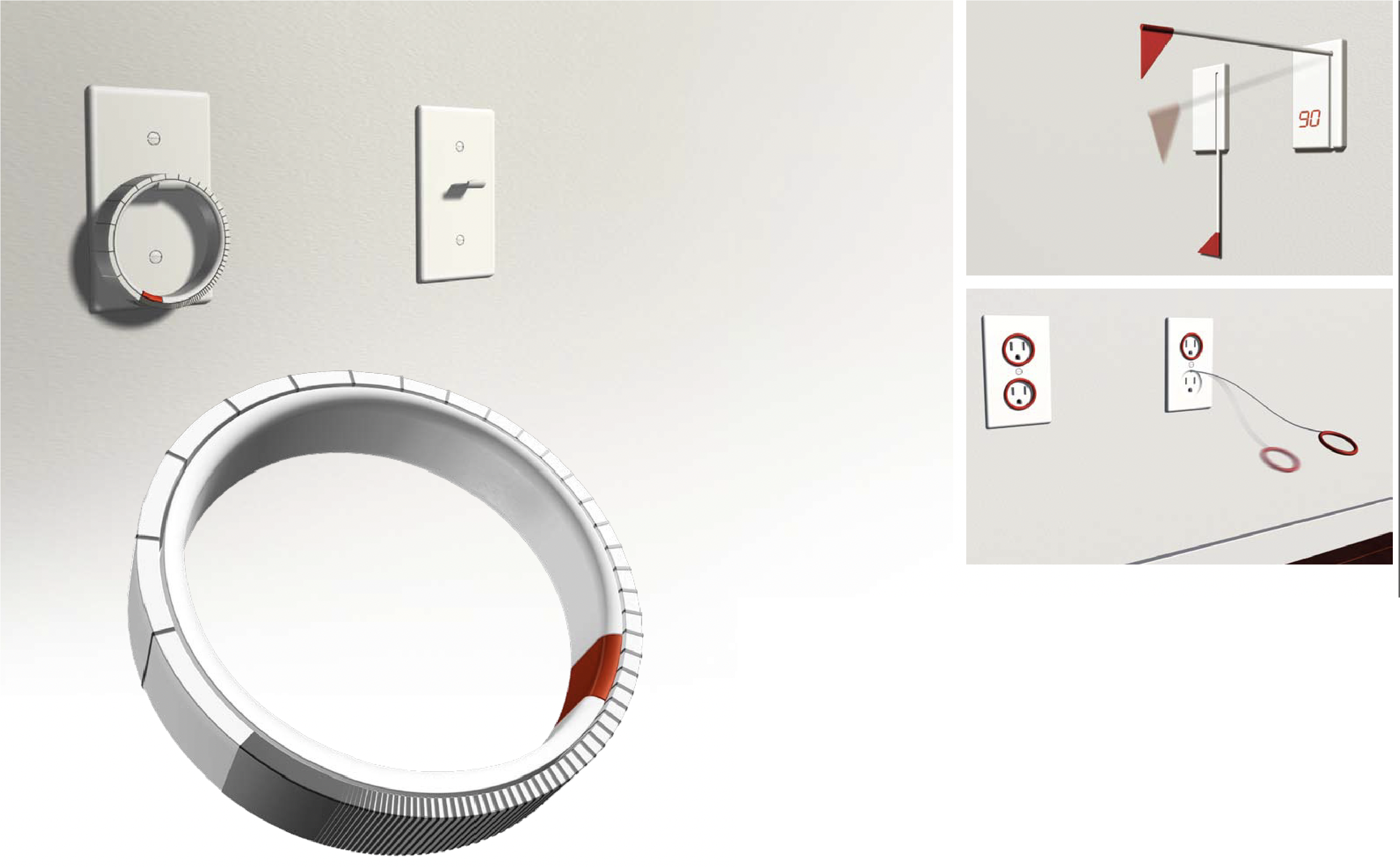
07 · Last Gasp
Global average sea levels are expected to rise by 7–23" by the end of 2100.
Preserve
By Thomas Brisebras
Preserve is a product design concept with the goal of gradually educating users about personal habits related to energy consumption. It comes in the form of an attractive hourglass-inspired interface that sits on prominent display, for all to see. It’s a beautiful object that also plays the role of master controller over electricity usage at home.
When the hourglass empties, the electricity that runs through the house turns off automatically. When the user voluntarily turns the hourglass into its horizontal docking position, he or she elects to turn the electricity off. When it sits vertically, energy is being consumed, until it reaches its daily maximum. At the end of each day, overturning the hourglass marks the beginning of a new cycle of energy expenditure.
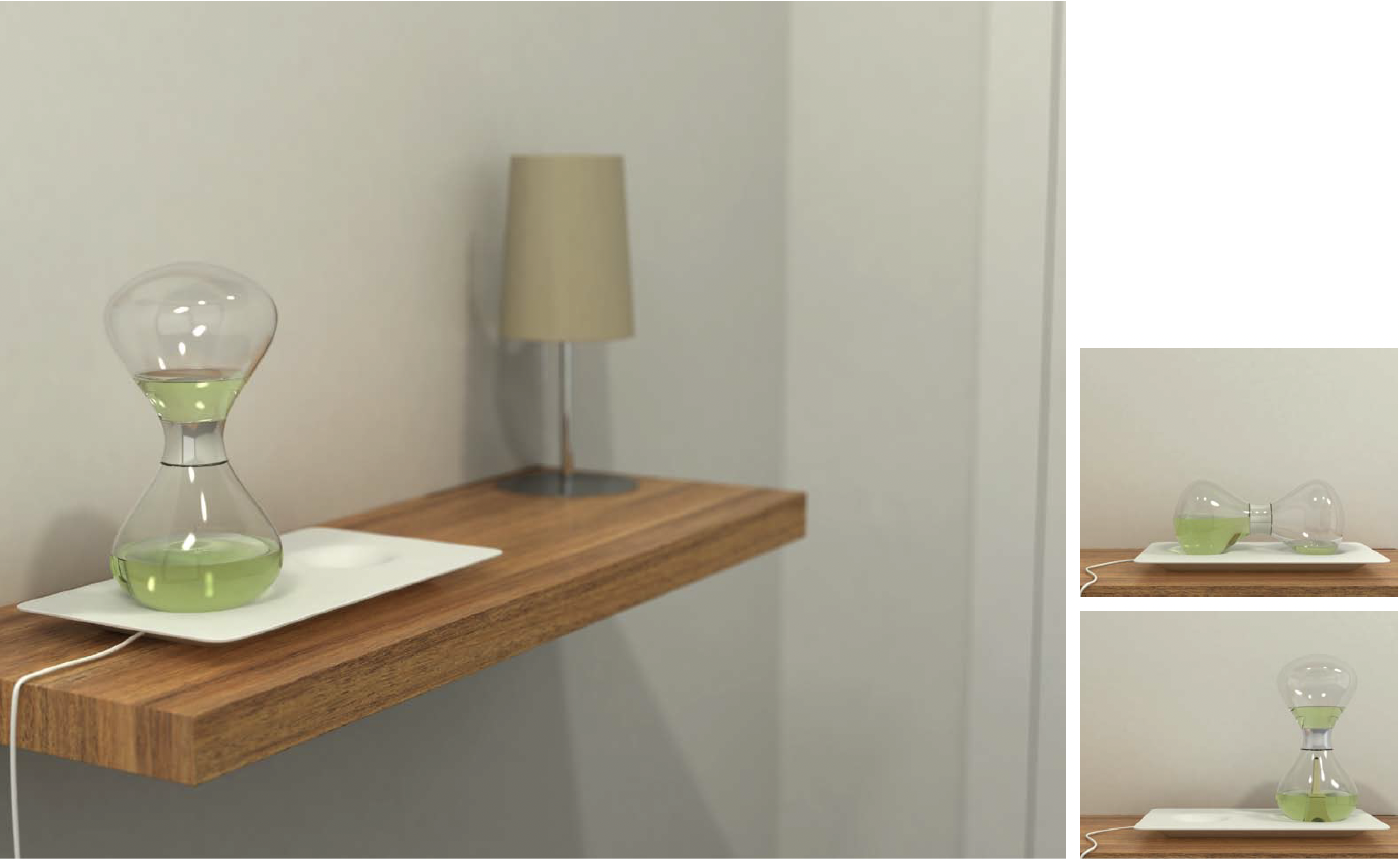
08 · Dial It Up, Dial It Down
Heating and cooling account for approximately 56% of the energy used in a typical U.S. home.
Wear Socks, Reduce Your Footprint
By Martin Schnitzer
This design concept is meant to inspire a simple shift in thinking about our individual energy imprint on the Earth. No new product has to be purchased to help one behave more sustainably; one needs simply to start behaving more sustainably with what’s on hand, or foot!
The simple act of slipping on a pair of socks to stay warm is a great way to tread a little lighter on the Earth, cut electricity bills, and make good use of readily available resources. Being green is not meant to be exclusive. Being green is an open invitation to one and all. Start now. Wear socks.

9 · Kids Are People Too
Curitiba, Brazil, tapped into the power of youth by first introducing the city’s voluntary recycling program in the school system. Children caught on quickly and became enforcers on the domestic front. Today, two-thirds of the city’s daily garbage (100 tons) is successfully recycled.
The Protons
By Didier Hilhorst and Nicholas Zambetti
The Protons are a set of playful toy monster lamps that both educate and animate: they light up and glow when they are charged, by way of human-powered interaction. By directly relating human effort to light output, we can communicate the process behind, and the value provided by, energy production.
To operate The Protons, the user pulls a cord repeatedly for one minute, which yields three hours of illumination—just the right amount of time to light the journey into dreamland. The Proton is a renewable light source and learning tool that tangibly connects effort in with energy out.
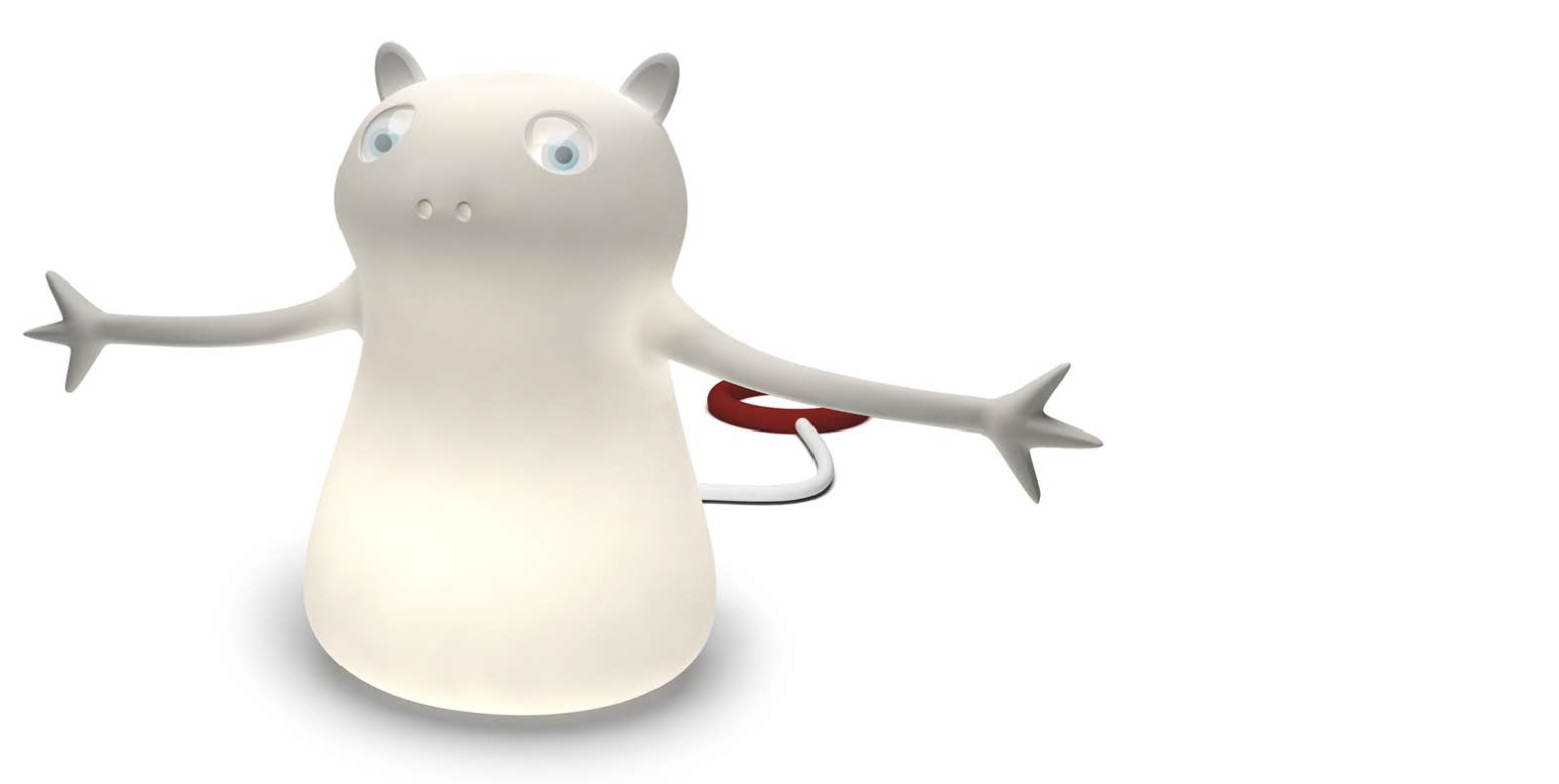
10 · A Thing for Plastics
The world’s annual consumption of plastic materials has increased from approximately 0.5 million tons in the 1950s to nearly 10 million tons today.
Dear Design Director
By Julia Landsiedl
A hand-written letter placed on a design director’s desk might encourage him or her to think twice before bringing to life yet another object. Scribed on a piece of paper found in the trash, this concept is meant to remind leaders in the design industry that even a so-called sustainable new product is still one more object that populates (and likely pollutes) our world. These letters include pull-off tabs to inspire viral messaging. That is, the recipient can spread the message among an eager team of young designers, and so on, and so on.
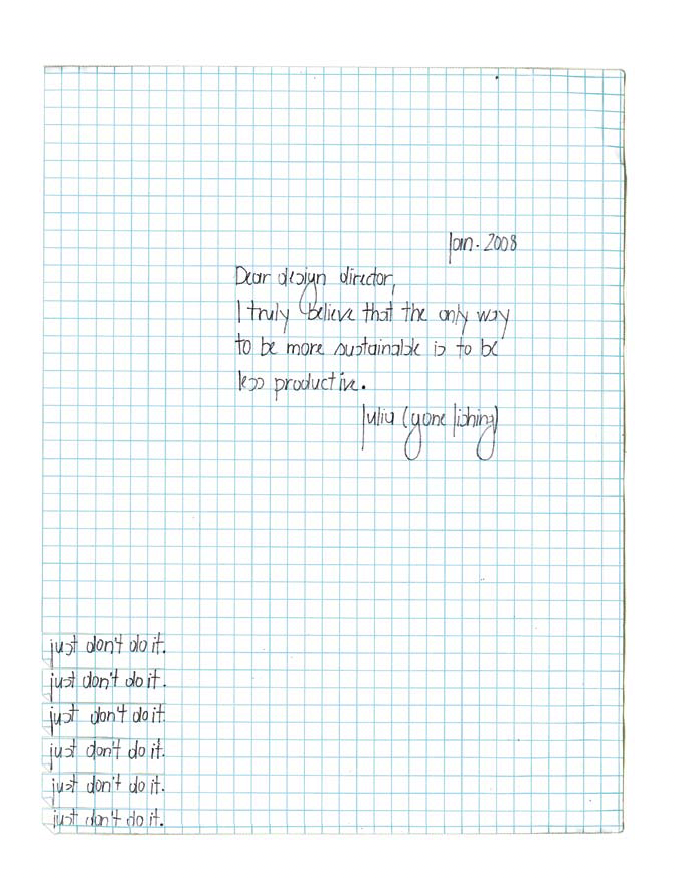
11 · Two for One
One mature tree can absorb carbon dioxide at a rate of 48 lbs. per year, releasing enough oxygen back into the atmosphere to support two human beings.
The Living Coffin: A Sustainable Death Experience:
By Arvind Gupta
Illustrations: Ricardo Figueiroa
Grieving the loss of a loved one is a difficult journey we all sooner or later come to experience. The Living Coffin concept responds to this emotional challenge by transforming a burial site into a living memorial. The idea is to grow a maple tree on-site, allowing it to become one with the deceased, enabling the essence of the person to entwine with the life force of the tree.
The Living Coffin is made of a biodegradable starch that provides food for the maple tree seeds embedded within its walls. Upon burial, the seeds begin to decompose and provide nutrients to the surrounding trees. Over time, an entire cemetery of Living Coffins transforms into a city park that encourages leisure while also celebrating the legacy of lost loved ones.

12 · Tapping In
A dripping tap wastes at least 1,450 gallons of water a year. That’s enough water wasted to fill a paddling pool every week for an entire summer.
5-Gallon Jug
By John Lai and Afshin Mehin
This concept is built on the premise that knowledge inspires behavioral change. A digital in-shower display in the familiar shape of a five-gallon water jug reflects water usage from an in-line flow meter (that generates power for the display). At a rate of five gallons per minute, an individual in the shower for 15 minutes will see they’ve consumed 75 total gallons, or 25 five-gallon jugs!

13 · Waste Not, Want Not
Since 1980, the annual generation of municipal solid waste, also known as household trash, has increased more than 60% to approximately 250 million tons per year.
Consider It
By Stephen Wahl
Despite the short-term convenience of paper and plastic bags, the only long-term solution is to use a bag you already own, over and over, again and again. The alternatives can be recycled, but relentlessly enter the waste stream and end up as landfill. Sustainable solutions start with a small change from a lot of people. And a little consideration.
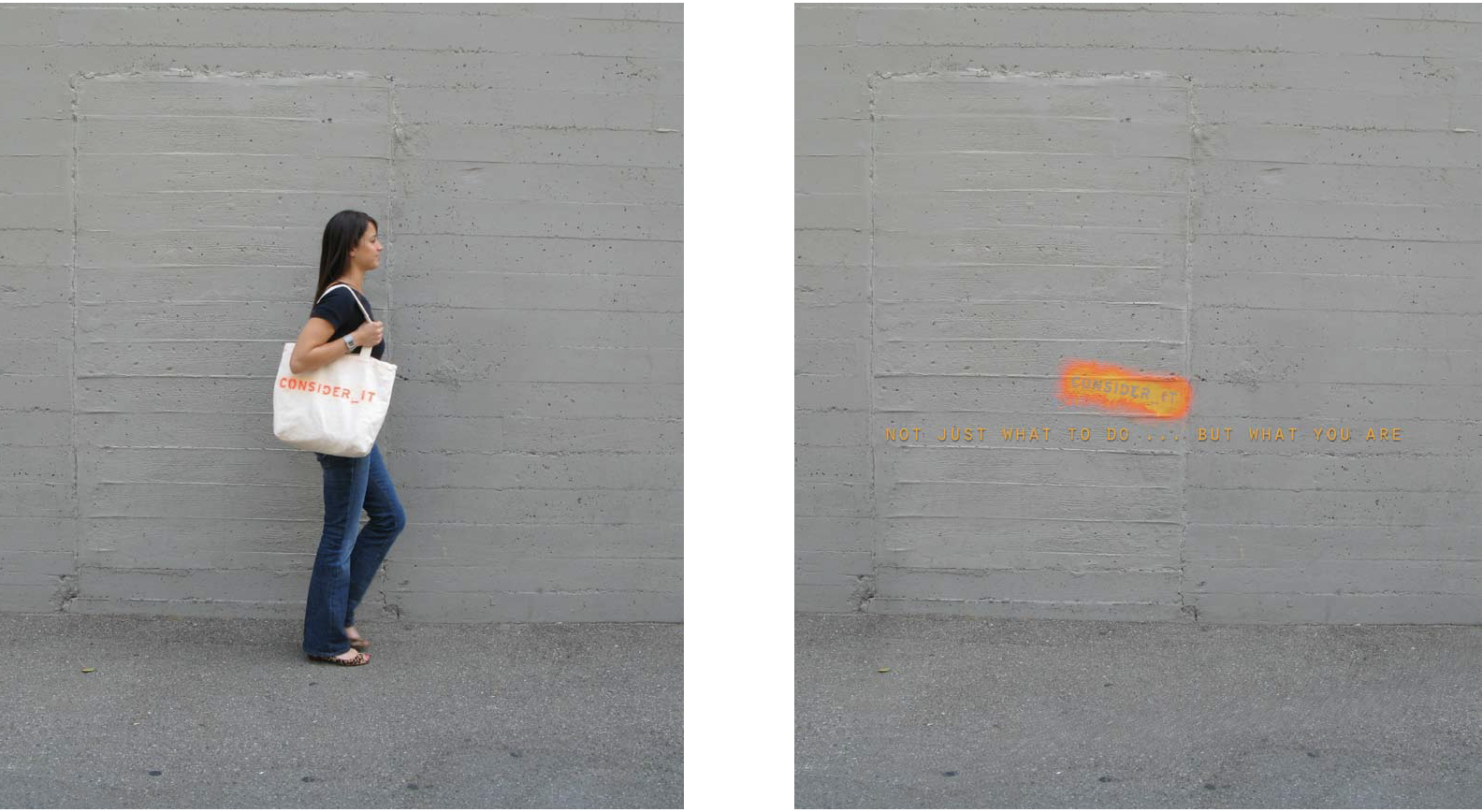
Blackout
Hate the facts, love the fiction? Have an itch to coin-operate your shower? Wind up your kitchen stove? Get it on with Mother Earth? These are all good signs. You’re seeing possibilities where they didn’t seem to exist before. Every bit of ingenuity and effort counts—from all of us. Thanks for turning on to the potential for change, and turning off the lights
Cover image: Getty Images
Additional photography: iStockphoto
Heading 1
Heading 2
Heading 3
Heading 4
Heading 5
Heading 6
Lorem ipsum dolor sit amet, consectetur adipiscing elit, sed do eiusmod tempor incididunt ut labore et dolore magna aliqua. Ut enim ad minim veniam, quis nostrud exercitation ullamco laboris nisi ut aliquip ex ea commodo consequat. Duis aute irure dolor in reprehenderit in voluptate velit esse cillum dolore eu fugiat nulla pariatur.
Block quote
Ordered list
- Item 1
- Item 2
- Item 3
Unordered list
- Item A
- Item B
- Item C
Bold text
Emphasis
Superscript
Subscript





















